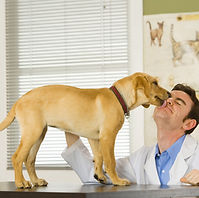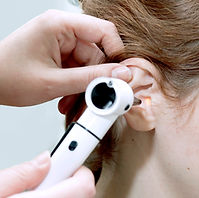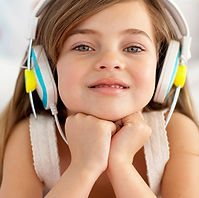
Sense of Sight: How Does the Eye Work?

This lesson contains affiliate links to products I have used and personally recommend. At no cost to you, I make a commission for purchases made through the links or advertisements. These commissions help to pay for the costs of the site and enable it to remain free for anyone who wants to use it.
Objectives:
-
Students will be able to describe parts of the eye.
-
The students will be able to describe how the eyes and the brain work together.
-
Students will be able to explain how the eyes differentiate color.
-
Students will be able to describe different eye problems and the effect each has on a person’s sight.
Question that encompasses the objective:
When someone asks you, “What color is that?” How do you know what to tell them?
[How do you know something that is green is green?]
Prepare the Learner: Activating Prior Knowledge
How will students’ prior knowledge be activated?
Warm up by asking students:
-
What do you know about your eyes and your sense of sight?
-
Can you name any parts of the eye?
Common Core State Standards:
-
CCSS.ELA-LITERACY.SL.2.1
-
CCSS.ELA-LITERACY.SL.2.1 B
-
CCSS.ELA-LITERACY.SL.2.4
-
CCSS.ELA-LITERACY.W.2.2
-
CCSS.ELA-LITERACY.W.3.2
-
CCSS.ELA-LITERACY.W.3.2 B
-
CCSS.ELA-LITERACY.SL.3.1
-
CCSS.ELA-LITERACY.SL.3.4
Materials and Free Resources to Download for this Lesson:
-
Mirrors (enough for students to work in groups of 3)
Input:
What is the most important content in this lesson?
To reach the lesson’s objectives, the students need to understand:
-
The function of each part of the eye.
-
The role of rods and cones and how they create an electrical message and transmit it to the brain for understanding.
-
Different types of eye problems and how they affect a person’s sight.
How will the learning of this content be facilitated?
-
The lesson will start out with the students breaking into groups of three. Each group will be given a mirror. The students will be instructed to look at their eyes in the mirror. The students will point out the different parts of the eye that are visible (i.e., eyelashes, pupil, iris). Encourage the students to talk about what thye see with their group. The students will engage in this activity for about 10 minutes before reconvening at their desks.
-
The teacher will lead a class discussion about the activity, asking questions about what the students observed. The teacher should also explain the function of eyelashes and eyebrows to the students.
-
Eyelashes: help keep dust and dirt out of your eyes.
-
Eyebrow: help keep sweat, dust, and dirt out o your eyes.
-
After the discussion, the teacher will hand out the “Diagram of the Human Eye” worksheet. If it is possible, project the “Diagram of the Human Eye” onto the board using a projector or put into a PowerPoint document and project so that the teacher can point to the parts of the eye while they explain. Students should write the name of each part on the line as it is explained. From this activity, the students will learn about the parts of the eye that are not visible. Each part’s function will be explained.
Parts of the Eye and Their Functions:
-
Ciliary Body: muscles of the eye that squeeze and relax. When looking at something that is far away, the muscles will relax and the lens will become smaller. When looking at something close, the muscles will squeeze and the lens will become bigger.
-
Iris: the colored part of the eye. The iris controls the light that enters the eye.
-
Anterior Chamber: located between the iris and the cornea’s innermost surface. This area is filled with fluid.
-
Pupil: the black part of the eye. The pupil allows the light to enter the eye. When the light is bright, the pupil is small. When the light is dim/ dull, the pupil is big.
-
Cornea: clear skin that covers the front of the eye. The cornea does not contain blood vessels.
-
Lens: works with the retina to ensure that the image the eye sees is clear.
-
Sclera: also known as the “white of the eye”. The sclera is a tough skin that covers the eyeball.
-
Retina: contains the rods and the cones. The rods help you see black and white and the cones help you see colors. The rods and cones take the image you see and turn it into an electrical message. This message is than transmitted to the brain for understanding.
Rods and cones are the parts that help see colors. Rods are used in a dark room, which is why you often cannot see color very well. Cones are used in the light and are sensitive to three colors: blue, green, and red.If someone is colorblind, one of the cones may be weak. For example, if someone asks you, “What colors are on a stop light?” and you have a green deficiency, you will see a yellow-green for the red part, a lighter shade of yellow-green for the yellow part, and gray for the green part. Without the cones, we would not be able to depict what color an object is. Show the students the “Colorblindness Test” pictures.
-
Macular: a sensitive area located in the center of the retina that helps to create centralized vision.
-
Vitreous: thick liquid of jelly consistency that covers the eyeball.
-
Optic Nerve: once the retina creates the message for the brain, it travels along the optic nerve.
-
Ora Serrata: located between the retina and ciliary body.
-
Rectus Medialis: keeps the pupil close to the midline of the body.
[Information source: Kids' Health]
It is important to explain to the students that, even though we see right-side up, our eyes do not. When the eye sees an image, it is upside down. When the eye transmits the image to the brain, the brain turns it so that we see the image the correct way.
After the diagram is explained, the students will go on a gallery walk. The gallery walk will feature six different images depicting different vision pathologies (vision disorders). Each student will have a “Vision Disorders” observation worksheet that they will complete as they observe each picture. Allow the students to work for about 10-15 minutes. Reconvene and discuss when the students are finished.
Pathologies/ Disorders:
-
Glaucoma
-
Macular Degeneration
-
Cataracts
-
Diabetic Retinopathy
-
Nearsightedness
-
Farsightedness
The final assessment will be for the students to answer the question:
Think about color-blindness. What types of problems do you think people who are colorblind face? Do you think that being colorblind can be dangerous? Why or why not?
Time/Application
3-5 minutes
Guided Introduction
Review the class/ agenda with the students:
-
Introductory Activity (students observing their eyes)
-
Diagram of the Eye (with explanations of functions)
-
Gallery Walk: “Vision Disorders”
-
Discussion of Gallery Walk
-
Independent Assessment
10 minutes
Introductory Activity:
-
Have the students break into groups of 3.
-
Give each group a mirror.
-
Instruct the students to look at their eyes using the mirror and discuss what they see.
-
At the end of 10 minutes, have the students return to their desks and discuss their observations.
15 minutes
Diagram of the Eye
-
Give each student a “Diagram of the Eye” worksheet.
-
Project the diagram onto the board either through a projector or PowerPoint presentation.
-
Tell the students that as each part is explained, they should label it onto their worksheet.
-
When the rods and cones are discussed, show the students the “Colorblindness Test” pictures.
15 minutes
Gallery Walk: Pathologies/ Disorders of the Eye
-
Arrange the pictures of the various pathologies/ disorders of the eye around the room.
-
Give each student a “Disorders of the Eye” observation sheet.
-
Instruct the students to walk around the room and observe each picture. Have the students write their observations on their sheet.
-
At the end of 15 minutes, have the students return to their desks and discuss their observations.
15 minutes
Closure/Independent Assessment:
-
As an independent assessment, the students will answer the question:
-
Think about color-blindness. What types of problems do you think people who are colorblind face? Do you think that being colorblind can be dangerous? Why or why not?
Appropriate answers should include (but will vary):
-
People who are colorblind have difficulty seeing objects that are the color they are weak in. This can cause difficulty when trying to describe how something looks, identifying the colors of signs or traffic lights while driving. Color-blindness can be dangerous at some times, especially when emergency signals are color-coded.
-
If there is additional time, discuss questions from the Gallery Walk.
Individualized Instruction/Scaffolding
English Language Learners will be supported in this lesson through data-based heterogeneous grouping, verbal and written repetition of new vocabulary words, and multiple representation of vocabulary words through printed images and video.














